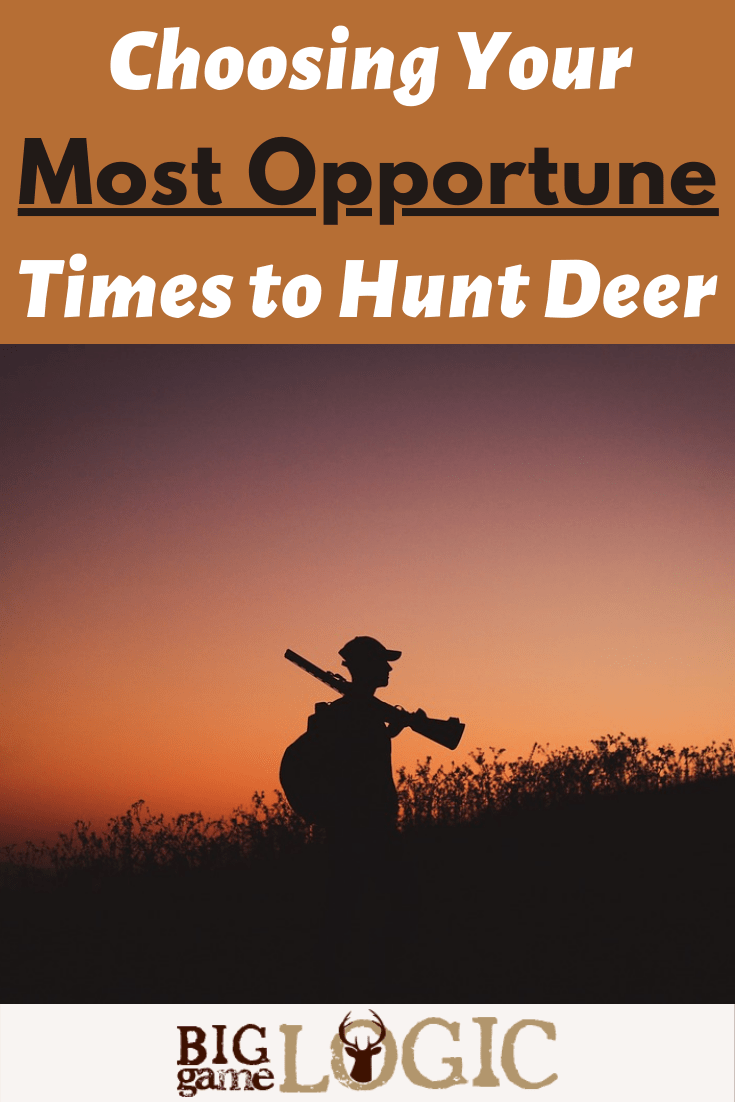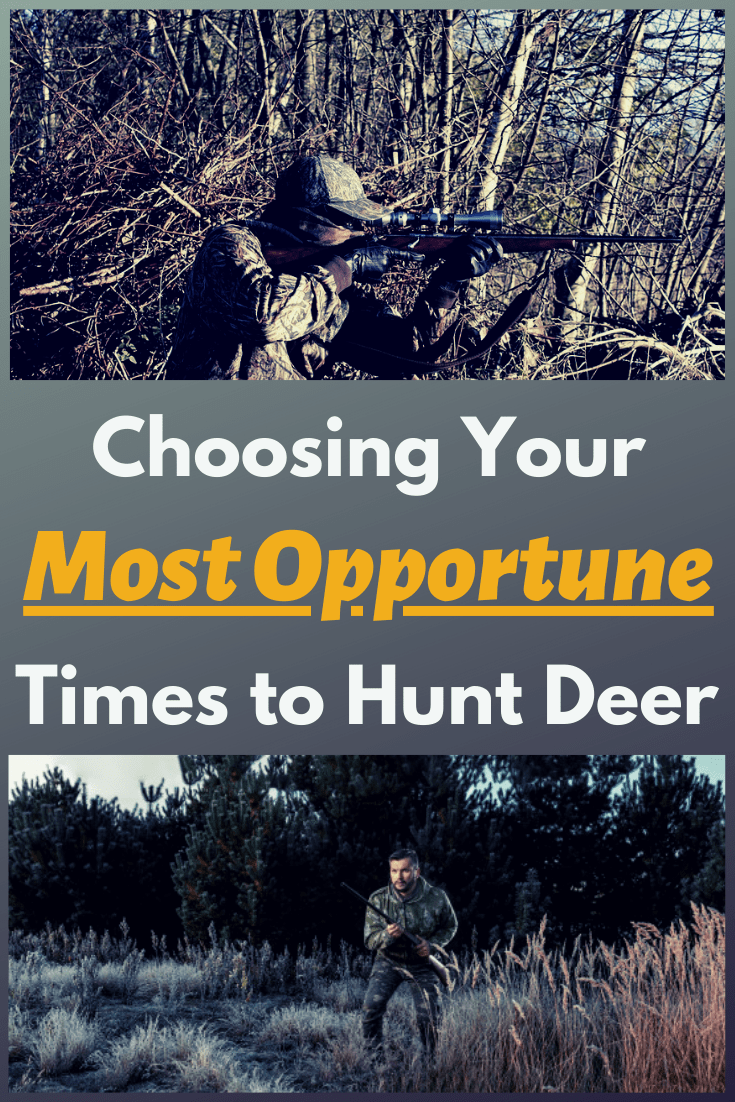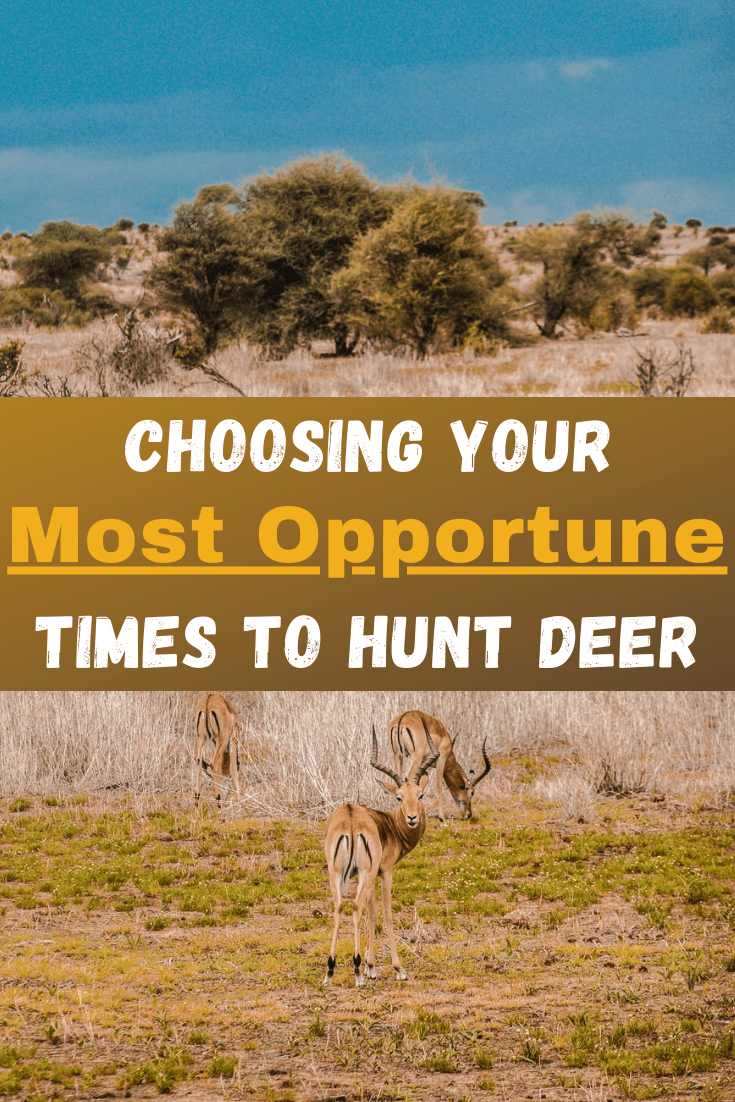Big Game Logic is reader-supported. When you buy through links on our site, we may earn an affiliate commission.
There are some nifty, but simple, "trade secrets" to use when choosing the best time to gun deer hunt, which, if followed, will increase your chances for success tremendously. We'll be using Wisconsin's gun deer season regs and stats to demonstrate, but these can be easily adapted to whatever state or area you hunt.
Guide Phil Schweik says there are three "primo" times to gun deer hunt during the season.
Phil says the number one best time to hunt is opening weekend. Unlike bow hunting, where you have a three-month staggered season, gun hunters only have nine days. Typically. a good percentage of your deer get shot on the very first weekend of the season, especially the first Saturday. You've got maybe 600,000 hunters in the woods and the deer are panicking. looking for cover. The savvy hunter sets up in an ambush, after locating some type of "escape route" that the deer are using to find safety.
To take advantage of these panicking deer, you can't just set up on field edges or at some opening. Typically your big bucks or "educated" deer are not going to be running around in the open. You need to set yourself up in a funnel type area, between two openings, or along the edge of a cedar swamp or tag alder thicket. These are the areas the deer seek out for safety and cover.

Now, you've been patterning all year long, and you think you know where the deer are bedding, or where forage areas are, but once 600,000 hunters enter the woods, you can throw all of that "knowledge" right out the proverbial window. Why? Because the deer aren't thinking of eating or resting. They're seeking every bit of cover they can find to hide in, as quick as they can get there.
Phil says he's been successful every year by his willingness to understand deer habits, and to be willing to traverse the most unforgiving, tangled, dirty areas there are. It's much the same strategy that bear hunters use -- and yes, these areas are some that most "self respecting" hunters won't even consider going near. Those who do so, however are the ones who usually end up with a scratch or two, dirt and grime all over them, but smiling like all get-out with the number one trophy buck taken that season in the area.
The second best time to gun deer hunt is the Wednesday -- or fifth day -- of the season. Opening weekend you've got the 600,000 hunters in the woods. By Monday, most of these folks are back at work, and things get back to "normal." Monday is quiet, Tuesday quieter, and the deer are feeling a lot safer, and are more at ease. They're feeding again, and they're back to their old habits. By Wednesday, the deer are at ease. That's the day that you set up on an escape route, or set up in traditional feeding-to-bedding route areas. Phil Schweik says that he has been successful several years in a row, hunting on the fifth day of the gun season!
The third most important time is Thanksgiving Day. Some of the biggest deer of the year are taken on Thanksgiving. All of a sudden, the 600,000 hunters are back in the woods because it's a holiday, and the deer who had a respite are now back in panic mode, running helter-skelter for safety. It's like opening day again. Just set up on your escape routes, and get ready for some fast action.
Best Times for Bow Hunting Deer
If you're a serious bow deer hunter, but you only have a limited time to hunt, you need to carefully choose the most opportune window to do so, to maximize your chances of getting a deer.
Too many deer hunters just go out helter-skelter, and then when they don't get something, they whine and complain about "no deer being in the woods." That's total horse-hockey. We know bow deer hunters that get trophy or near-trophy deer each and every deer bow season. If you follow some simple rules, you can too.
OK – you've done your pre-season scouting. You've patterned your deer and know the deer trails and routes they use between their feeding and bedding areas. Your stand is up and ready. Now what? There are three general "times" during bow season that you should consider:

How to Know When You Should Go
First... Go "early." The first two weeks of the season (remember bow season comes before gun season -- so you're first in the woods when it comes to going after deer) are "primo" for bow hunters. The deer have not yet been "educated" to the presence of hunters. Within a couple of weeks after the season begins, the deer herd becomes very wary, and, in all probability, that trophy buck you're after will go "nocturnal." You can kiss that Boone & Crockett record-setter "bye-bye," when that happens.
Second... and guide Phil Schweik's personal favorite -- is during the rut. This usually starts around Halloween and goes up until around the second week in November. There are more big bucks taken during archery season at this time than any other. If Phil Schweik had to choose the literal day/dates to bow hunt, he'd break it down into a three or four day window, and choose November 2 to November 6, each year. "When the bucks go into rut, their guard and sense are way down, and they're much easier to target," Phil says.
Third... and this is one that too few bow hunters take advantage of: Late season bow hunting. This comes after the traditional gun and muzzleloader seasons and goes from mid-December into early January.
Best time to bow hunt in late season is from around Christmas to right after New Year's when the season closes. It's cold. The snow is on the ground (the more the better, because with heavy snow the deer have to stick to their traditional trails for ease of travel and won't "break" new trails, which is great for the deer hunter), and the deer have already been hunted by hundreds of thousands of people -- they're weary. With winter upon them, the deer are forced to feed more regularly to keep up their strength and viability, and can be EASILY patterned coming and going from their feeding areas.
There are a few other windows of course -- like moon phases and activity times -- but the three outlined above hold the most potential for a successful bow hunt. Go get 'em!
Hunting by Moon Phase
It's true, you can enjoy the victory of a successful hunt by following the phases of the moon. This fascinating article explains how you can accurately predict when deer and other wildlife are the most active. Every season, millions of hunters take to the woods with renewed enthusiasm and vigor. Unfortunately, many come away empty handed, returning day after day to face similar results. It's every hunter's biggest dilemma, but some have found the perfect solution, and that is hunting by moon phase.

For years, researchers have studied the reaction of wildlife to changes in the position of the sun and moon and have come up with some rather interesting observations in relation to hunting by moon phase. So, how does this work? How can paying attention to the phases of the moon help ensure a hunter's success? Animals and the Moon
Moon Phase Deer Hunting
Much of the research that has been done on this subject has involved hunting deer, and many hunters swear that hunting by moon phase is the only way to accurately predict deer activity. But the moon doesn't only have an impact on deer activity. The various phases of the moon also seem to have a direct effect on deer mating patterns, which in turn make them easier to locate. It's because of this that moon phase deer hunting -- as it's becoming commonly known -- is quickly gaining acceptance.
Being aware of when the breeding season begins helps to determine travel patterns and areas of increased deer activity. When the breeding season is at its peak, finding deer is easier and finding more than one in a particular area more likely.
So what does this have to do with the moon? A female deer's reproductive cycle is influenced by the different phases of the moon, and peaks in the three or four days surrounding the second full moon after the autumnal equinox. When the does are in heat, the bucks begin rubbing and scraping in an attempt to attract them. If you know when the full moon occurs, you can be at the right spot, at the right time, and have the best chance for success, luring the bucks into your site.
By being aware of the different moon phases, deer hunting can be far more successful. But not only that, it can also help you figure out when not to hunt. You aren't going to be successful after the deer have mated and even the phase when the bucks are chasing the does can be pretty fruitless. By becoming familiar with these patterns and planning ahead, hunting by moon phase will almost certainly lead to your best hunting season ever.Share to Pinterest



